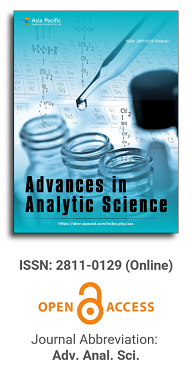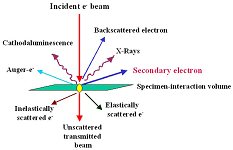
Asia Pacific Academy of Science Pte. Ltd. (APACSCI) specializes in international journal publishing. APACSCI adopts the open access publishing model and provides an important communication bridge for academic groups whose interest fields include engineering, technology, medicine, computer, mathematics, agriculture and forestry, and environment.

Environmental monitoring of heavy metals in aquatic macrophytes by atomic absorption spectrometry analysis—AAS in Cascavel River basin, Guarapuava, PR
Vol 4, Issue 1, 2023
Download PDF
Abstract
High concentrations of heavy metals in urban watersheds can offer harmful effects to human health and have contributed to environmental contamination. The present work aims to evaluate the total concentration of Zn (zinc), Mg (magnesium), lead (Pb), Cr (chromium), manganese (Mn) and Ni (nickel) analyzed according to FAAS—Flame Atomic Absorption Spectrometry, in samples of the aquatic macrophyte Egeria densa present in the urban stretch of the Cascavel River watershed, Guarapuava, PR; and specific objectives to identify the potential sources of contamination by heavy metals and to obtain physical parameters of the water. The elements zinc, magnesium, manganese and lead showed higher potential emissions upstream, a fact associated with the proximity of the industrial zone of Guarapuava. It is likely that the increase in electrical conductivity values at the upstream points is related to the discharge of domestic effluents. The decrease of conductivity and total dissolved solids in the sample points occurs downstream, corresponding to the lower topography of the study area and the end of the urban stretch of the Cascavel River basin. Despite the concentrations of heavy metals being considered critical, the plant showed efficiency in bioaccumulation of these chemical elements, being an effective tool for research and environmental assessment, and aquatic macrophytes can be the basis for biomonitoring studies of urban environments impacted by heavy metals.
Keywords
References
- Ahmad K, Azizullah A, Shama S, et al. Determination of heavy metal contents in water, sediments, and fish tissues of Shizothorax plagiostomus in river Panjkora at Lower Dir, Khyber Pakhtunkhwa, Pakistan. Environmental Monitoring and Assessment. 2014; 186(11): 7357-7366. doi: 10.1007/s10661-014-3932-1
- Olowoyo JO, Okedeyi OO, Mkolo NM, et al. Uptake and translocation of heavy metals by medicinal plants growing around a waste dump site in Pretoria, South Africa. South African Journal of Botany. 2012; 78: 116-121. doi: 10.1016/j.sajb.2011.05.010
- Arai T, Ohji M, Hirata T. Trace Metal Deposition in Teleost Fish Otolith as an Environmental Indicator. Water, Air, and Soil Pollution. 2006; 179(1-4): 255-263. doi: 10.1007/s11270-006-9229-4
- Karnitz Júnior O. Chemical modification of sugarcane bagasse and cellulose using edta anhydrous: use of these materials in the adsorption of heavy metals in aqueous solution [Master’s thesis]. Universidade Federal De Ouro Preto—SP; 2007.
- Arias ARL. Use of bioindicators in the evaluation of impact in monitoring the contamination of rivers and streams by pesticides. Science and collective health. Associação brasileira de pós-graduação em saúde coletiva; 2007.
- Batista FGA, Freire JA. Evaluation of heavy metals in the water body of the old dam: campina grande-paraíba (Portuguese). Engenharia ambiental, espírito santo do pinhal. 2010; 7(4): 166179.
- Divan AM, Oliveira PL de, Perry CT, et al. Using wild plant species as indicators for the accumulation of emissions from a thermal power plant, Candiota, South Brazil. Ecological Indicators. 2009; 9(6): 1156-1162. doi: 10.1016/j.ecolind.2009.01.004
- Pio MC da S, Souza K dos S de, Santana GP. Lemna aequinoctialis’ ability to accumulate heavy metals from contaminated water (Portuguese). Acta Amazonica. 2013; 43(2): 203-210. doi: 10.1590/s0044- 59672013000200011
- Oliveira NMB, Sampaio EVSB, Pereira SMB, et al. Regeneration capacity of Egeria densa in the reservoirs of Paulo Afonso, BA (Portuguese). Planta Daninha. 2005; 23(2): 263-369. doi: 10.1590/s0100-83582005000200026
- Alfasane MdA, Khondker M, Islam MdS, et al. Egeria densa Planchón (Hydrocharitaceae): A new angiospermic record for Bangladesh. Bangladesh Journal of Plant Taxonomy. 1970; 17(2): 209-213. doi: 10.3329/bjpt.v17i2.6702
- Rodella RA, Costa NV, Costa LDNC, et al. Differentiation between Egeria densa and Egeria najas by leaf anatomical characters (Portuguese). Planta Daninha. 2006; 24(2): 211-220. doi: 10.1590/s0100- 83582006000200002
- Peres CK. Diagnosis of the water quality of the Cascavel River, municipality of Guarapuava, state of Paraná (Portuguese). Ambiência Guarapuava, pr. 2008; 4(1): 25-35.
- Amorim FAC. Atomic absorption spectrometry: the road to multi-element determinations. Nova chem. 2008; 31(7).
- Maack R. Physical geography of the state of Paraná, 4th ed (Portuguese). Ponta grossa: editora uepg; 2002.
- Ipardes. Guarapuava municipality statistical notebook (Portuguese). Available online: http://www.ipardes.gov.br/cadernos/montacadpdf1.php?Municipio=85000 (accessed on 3 June 2018).
- Thomaz EL, Vestena lR. Climatic aspects of Guarapuava-PR. Guarapuava: unicentro; 2003.
- Ayoade JO. Introduction to climatology for the tropics (Portuguese). Rio de janeiro: editora bertrand brasil; 1983.
- Santos DM. Evaluation of heavy metals in Paranaguá Bay, PR, Brazil, under the influence of anthropogenic activities (Portuguese). Journal Brazilian society ecotoxicology. 2006; 1: 157-160.
- Dean JG, Bosqui FL, Lanouette KH. Removing heavy metals from waste water. Environmental Science & Technology. 1972; 6(6): 518-522. doi: 10.1021/es60065a006
- Braile PM, Cavalcanti JEWA. Industrial wastewater Treatment manual. Cetesb, 1993, apud hayashi, a. M.Removal of hexavalent chromium from seaweed by biological adsorption [PhD thesis]. Campinas State University, Campinas; 2001.
- Santos GHF. Use of pixel spectroscopy to evaluate the biosorption mechanism of Cu2+, Zn2+ and Cd2+ ions by the macrophyte Egeria densa (Portuguese) [Master’s thesis]. Universidade Estadual do oeste do Paraná; 2012.
- Kabata-Pendias A, Pendias, H. Trace elements in soils and plants, 3rd ed. CRC New York Press; 2001.
- FAO. Maize in human nutrition. Available online: http://www.fao.org/docrep/t0395e/t0395e00.htm (accessed on 29 April 2018).
- Malavolta E. Fertilizers and their environmental impact: micronutrients and heavy metals—myths, mystification and facts. Piracicaba: produquímica; 1994.
- Gorayeb A, Pereira LCC. Integrated analysis of watershed landscapes in the eastern Amazon (Portuguese). Fortaleza: Imprensa Universitária; 2014. 108p.
- Albuquerque ELS. Assessment of socio-environmental conditions in coastal watersheds: a contribution to land-use planning in the eastern the eastern sector of the metropolitan region of Fortaleza, Ceará (Portuguese) [PhD thesis]. Universidade Estadual Do Ceará; 2015.
- Mirandal GA, Camila MG, Martins CS, Silva RG. The watershed as an urban planning unit (Portuguese). In: Proceedings of the Florianópolis, sc: xxii símposio brasileiro de recursos hídricos; 2017.
- Brazil, Conselho Nacional Do Meio Ambiente. National Environment Council. Resolution no. 430, of 13 may 2011. provides for the conditions and standards for discharging effluents, complements and amends Resolution no. 357, of March 17, 2005, of the national environment council (Portuguese). Conama. Diário oficial da união; 2011.
- Tuna C, Coskuntuna L, Koc F. Determination of Nutritional Value of Some Legume and Grasses. Pakistan Journal of Biological Sciences. 2004; 7(10): 1750-1753. doi: 10.3923/pjbs.2004.1750.1753
- Torres VFN. Underground environmental engineering and applications (Portuguese). Rio de janeiro: cetemcyted; 2005.
- Kabata-Pendias A, Pendias, H. Trace elements in soils and plants, 3rd ed. CRC New York Press; 2001.
- Cetesb. Guiding values for soil and groundwater. São paulo: cetesb; 2005.
- Sharma P, Dubey RS. Lead toxicity in plants. Brazilian Journal of Plant Physiology. 2005; 17(1): 35-52. doi: 10.1590/s1677-04202005000100004
- Kabata-Pendias A, Pendias, H. Trace elements in soils and plants, 3rd ed. CRC New York Press; 2001.
- Mahmood A, Rashid S, Malik RN. Determination of toxic heavy metals in indigenous medicinal plants used in Rawalpindi and Islamabad cities, Pakistan. Journal of Ethnopharmacology. 2013; 148(1): 158-164. doi: 10.1016/j.jep.2013.04.005
Supporting Agencies
Copyright (c) 2023 Glauco Nonose Negrão, Breno Henrique Henrique Marcondes de Oliveira, Mariane Butik

This work is licensed under a Creative Commons Attribution 4.0 International License.

This site is licensed under a Creative Commons Attribution 4.0 International License (CC BY 4.0).
1.jpg)
Prof. Sivanesan Subramanian
Anna University, India





.jpg)
